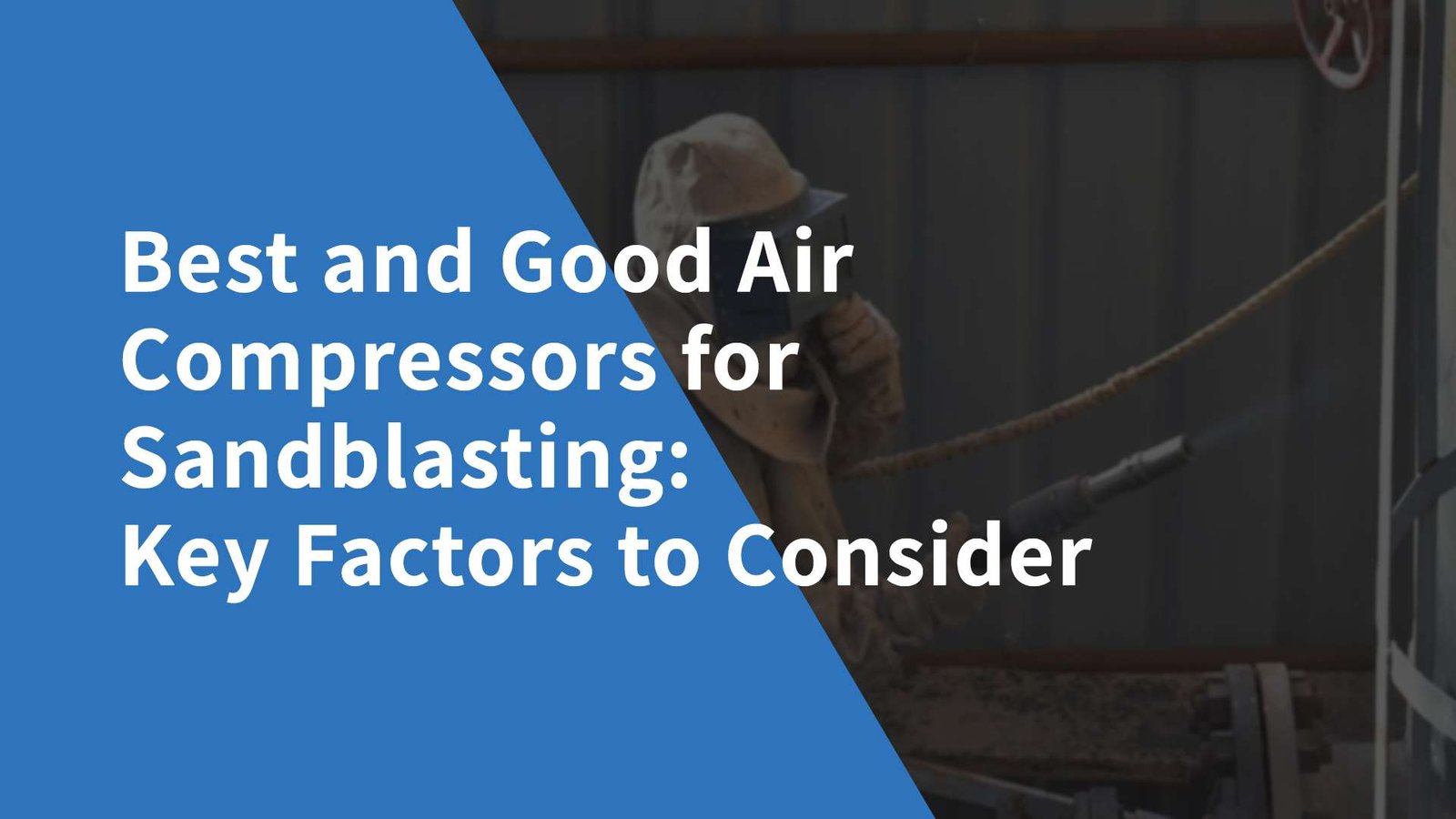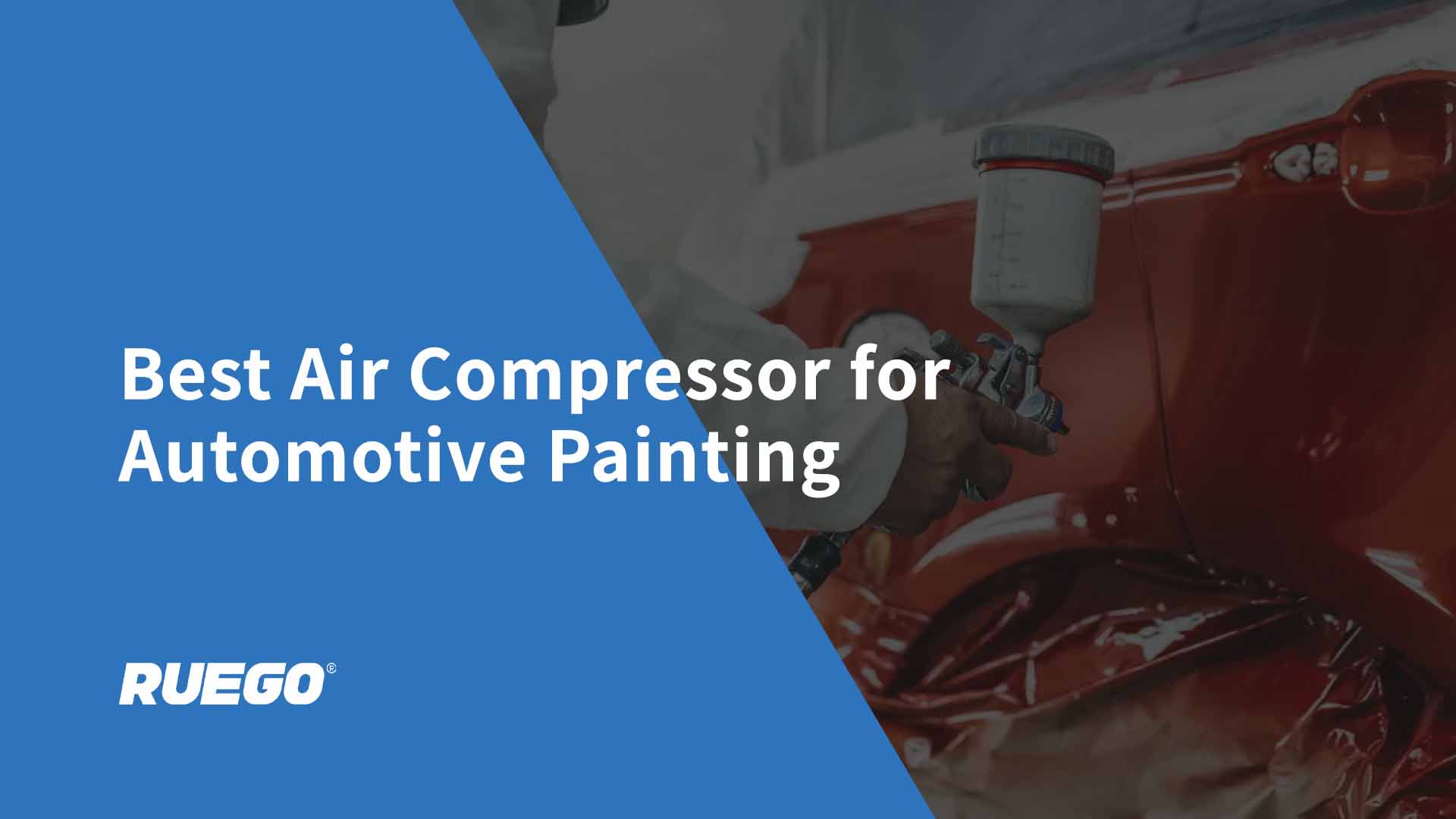
Sandblasting is a powerful technical process widely applied across various industries, including automotive restoration, industrial cleaning, and artistic engraving. This process requires high-quality professional equipment, with air compressors playing a central role. Sandblasting not only demands a continuous and stable airflow but also places high requirements on the performance of the air compressor, including precise control of pressure and flow rate.
Choosing a high-quality air compressor for sandblasting can significantly enhance efficiency. Whether you are handling small DIY projects or managing large-scale industrial operations, finding the most suitable air compressor depends on understanding your specific needs, including CFM (Cubic Feet per Minute, air flow) and PSI (Pounds per Square Inch, air pressure).
Table of Contents
Key Factors for Choosing an Air Compressor
Importance of CFM and PSI
CFM and PSI are the two most critical factors when selecting an air compressor for sandblasting:
- CFM (Cubic Feet per Minute): This measures the volume of air the compressor delivers. Sandblasting requires a continuous, high-flow rate of airflow. Compressors with insufficient CFM will struggle to maintain pressure, leading to inconsistent results.
- PSI (Pounds per Square Inch): PSI indicates the force of compressed air. For sandblasting, at least 90 PSI is typically required, though higher PSI levels may be necessary for tougher materials or more demanding applications.
For most sandblasting applications, a high-quality air compressor should deliver at least 90 PSI and a CFM rating of 18 or higher. For larger industrial projects, higher specifications might be required to match the workload.
How to Choose the Right PSI for Sandblasting
Selecting the correct PSI for sandblasting depends on several factors, including the abrasive material, surface type, and desired outcome:
- Abrasive Material: Different abrasives require varying PSI levels. For instance, harder materials like silica sand may need higher PSI compared to softer abrasives like glass beads.
- Surface Type: Delicate surfaces, such as wood or glass, require lower PSI to avoid damage, while robust surfaces like metal or concrete can handle higher PSI for effective material removal.
- Application Goal: For heavy-duty cleaning or paint stripping, higher PSI is crucial. However, for precise tasks like etching or detailing, lower PSI is sufficient.
- Equipment Recommendations: Always consult the manufacturer’s guidelines for your sandblasting equipment. These guidelines often specify the optimal PSI range for safe and effective operation.
Potential Issues with Insufficient PSI:
- Incomplete Material Removal: Low PSI may fail to strip paint or rust effectively.
- Wasted Abrasive Material: Without adequate pressure, abrasives might not impact the surface efficiently.
- Extended Project Time: Inadequate PSI can prolong work as material removal takes longer.
- Uneven Finish: Insufficient pressure can lead to an inconsistent or unsatisfactory surface texture.
Ensuring the right PSI enhances the efficiency and quality of your sandblasting projects, helping achieve desired results quickly and effectively.
Types of Air Compressors
Understanding the different types of air compressors helps make an informed choice:
- Piston (Reciprocating) Air Compressors: These are common in smaller projects and provide high pressure in a portable design. Although cost-effective, their small tank size and frequent motor cycling can lead to overheating and efficiency loss, making it difficult to maintain high CFM levels for extended periods. These compressors are better suited for short-duration, high-intensity tasks rather than prolonged continuous operations.
- Ideal for entry-level or DIY sandblasting tasks.
- Rotary Screw Compressors: Rotary screw compressors excel at providing a continuous high-pressure airflow, making them ideal for industrial sandblasting. Their pulse-free air supply design ensures stable airflow and pressure during extended operations. Compared to piston compressors, they are quieter and more robust, making them suitable for heavy-duty and continuous-use scenarios, avoiding issues such as overheating and performance degradation.
- Best for larger projects.
- Small Rotary Screw Compressors: These are designed as a replacement for some piston compressors, offering the portability and flexibility of piston models along with the stability, efficiency, and quiet operation of rotary screw compressors. For instance, the RUEGO Small Rotary Screw Air Compressor delivers 101.53–145.04 PSI and 9.89–46.29 CFM, with an integrated 23.78–31.70-gallon tank. This compact two-in-one unit is mobile and requires no installation, making it highly suitable for small to medium sandblasting projects.
- Suitable for entry-level or DIY small projects and medium-sized tasks.
- Oil-Free Compressors: These are easy to maintain and avoid contamination issues, making them ideal for applications requiring clean air. Their oil-free design ensures the prevention of oil contamination in demanding environments, making them suitable for industries like medical equipment manufacturing, food processing, and precision instrument sandblasting. However, compared to other types, oil-free compressors often lack the durability and sustained output required for heavy-duty sandblasting, making them more suitable for light or intermittent use.
Recommended Air Compressor Models for Sandblasting
Here are some top air compressors based on different needs and budgets:
Entry-Level Models
For small projects or occasional use, compact and portable piston compressors are a good choice.
- RUEGO Piston Air Compressor:
- Model: AV2508 3HP
- CFM: 8.83 @ 116 PSI
- Tank Size: 26.42 gallons
- Features: Easy to operate and portable
- Best Use: Ideal for DIY enthusiasts handling small sandblasting tasks.
- Or other brands and models with equal or higher parameters.
Mid-Range Options
For moderate use, consider models with higher CFM and larger tanks:
- RUEGO Small Rotary Screw Compressor:
- Model: Small4HP
- CFM: 19.78 or 16.96 CFM @ 101.53 PSI or 145.04 PSI
- Tank Size: 31.70 gallons
- Features: Durable and capable of handling medium sandblasting tasks.
- Or other brands and models with equal or higher parameters.
Industrial-Grade Models
Professionals and industrial users need compressors capable of delivering sustained performance:
- RUEGO Industrial Rotary Screw Compressor:
- Model: RG-10HP
- CFM: 38.85 @ 116 PSI
- Tank Size: Configurable as per requirements
- Features: High performance and durability, suitable for demanding applications.
- Or other brands and models with equal or higher parameters.
Operating Costs
Purchase Costs
The cost of air compressors varies by specifications and features:
- Entry-Level: $300–$600. These compressors are ideal for light-duty tasks or hobbyists and offer basic functionality at an affordable price.
- Mid-Range: $600–$1,000. Suitable for moderate sandblasting needs, these compressors often come with larger tanks, higher CFM ratings, and more durable components.
- Industrial-Grade: $1,000+. These are designed for heavy-duty, continuous use and come with advanced features like energy efficiency, noise reduction, and long-term durability. Industrial-grade models often represent a long-term investment for professionals.
Investing in the best air compressor for sandblasting can save on long-term operational and maintenance expenses.
Operating Costs
Operating costs include energy consumption, routine maintenance, and potential repairs. Here are key considerations:
- Energy Efficiency: Rotary screw compressors are generally more energy-efficient, reducing electricity bills over time compared to piston compressors.
- Maintenance Frequency: Oil-free compressors may require less frequent maintenance than oil-lubricated models but are typically less durable for heavy tasks.
- Component Replacement: Filters, hoses, and lubricants need periodic replacement. High-quality compressors often have longer-lasting components, which can reduce overall maintenance costs.
Investing in the best air compressor for sandblasting can save on long-term maintenance costs.
Maintenance Tips
- Proper maintenance ensures longevity and optimal performance of your air compressor. Follow these tips:
- Regular Inspection: Periodically inspect filters, hoses, and connections for wear and tear. Promptly replace any damaged components to prevent system inefficiencies.
- Filter Cleaning: Keep air filters clean to ensure proper airflow and reduce strain on the compressor.
- Lubrication: Ensure that oil-lubricated models have sufficient oil levels. Use high-quality lubricants to minimize wear on internal components.
- Pressure Check: Regularly check PSI levels to ensure the compressor operates within safe and effective ranges.
- Tank Drainage: Frequently drain moisture from the air tank to prevent rust buildup and maintain system integrity.
By adhering to these maintenance practices, you can extend the lifespan of your compressor, reduce downtime, and ensure consistent sandblasting results.
FAQs
What is the best air compressor for small sandblasting projects?
For small projects, choose a portable piston compressor with at least 90 PSI and 6–8 CFM, such as the RUEGO Piston Air Compressor.
Why is the rotary screw model the best air compressor for sandblasting?
Rotary screw models provide a continuous high-pressure airflow, making them ideal for large-scale and industrial sandblasting projects.
How do I calculate the required CFM for sandblasting?
Check your sandblasting equipment specifications. Multiply the nozzle size by the required PSI to estimate the CFM needs.
Making the Right Choice
Selecting the right air compressor is a key step to achieving efficient and effective sandblasting results. From understanding CFM and PSI to exploring different types of compressors, making an informed choice can save time, money, and effort.
Choosing a high-quality air compressor for sandblasting doesn’t have to be complicated—follow these tips to find the best option for your needs.
Whether you’re a DIY enthusiast or a professional, the right air compressor can transform your sandblasting projects. Ready to find your ideal compressor? Explore our recommendations or contact us for personalized advice!

